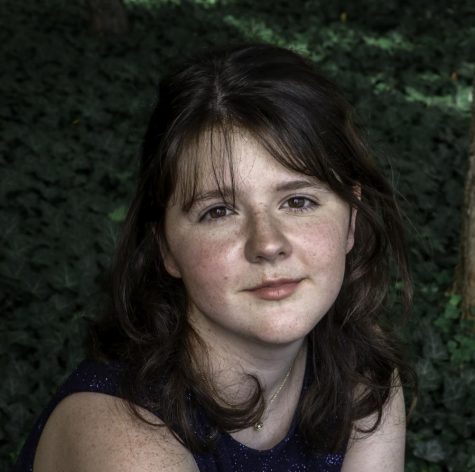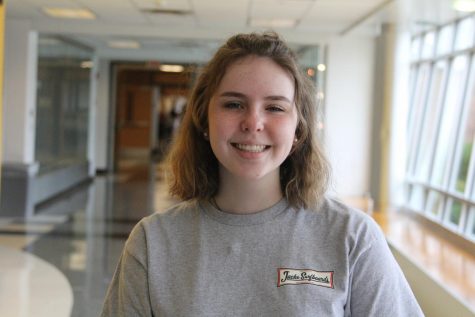Disastrous Debris
Trash affects global environments, needs solution
The average person generates more than four pounds of trash every day and about 1.5 tons of solid waste every year.
The EPA estimates that 75 percent of the American waste stream is recyclable, but we only recycle about 30 percent of it.
Humans generate 21.5 million tons of food waste each year.
If we composted that food, it would reduce the same amount of greenhouse gas as taking 2 million cars off the road.
A glass container can go from a recycling bin to a store shelf in as few as 30 days.
There are two main types of landfills.
Municipal solid waste landfills -> designed to hold household wastes, as well as other non-hazardous wastes.
Industrial waste landfills -> designed to hold commercial and institutional wastes.
Companies that are going green:
Starbucks: In July 2018 Starbucks officially announced they would eliminate the use of plastic straws in all stores by 2020. Starbucks anticipates this to eradicate more than 1 billion straws per year by developing strawless lids and offering straws of substitute materials like paper and compostable plastic.
McDonald’s: McDonald’s packaging is currently 50 percent renewable and plans to follow suit with the rest of their packaging by 2025 after receiving complaints by customers over “packaging waste.” Francesca DeBiase, McDonald’s sustainability officer, said the company’s ambition is to make changes customers want to use less packaging, sourced responsibly and designed to be taken care of after use.
Dunkin’ Donuts: After six years, Dunkin’ Donuts replaced its styrofoam cups. After starting the process in the spring, the coffee chain is changing out the cups for recyclable, responsibly sourced, paper cups instead. Karen Raskopf, Chief Communications and Sustainability Officer, said the company has a responsibility to improve packaging, making it better for the planet. Dunkin’ Donuts measures 1 billion foam cups will be out of the waste system per year once the process is completed in 2020. The company is also working on finding a recyclable lid.
DO recycle
- Plastics
- Bottles
- Paper
- Cardboard
- Metals
- Glass (not broken)
DON’T recycle
- Styrofoam cups/trays/containers
- Soiled food items
- Plastic utensils
- Fast food packaging
Marine debris
Common trash from consumer goods makes up the majority of what eventually becomes marine debris, polluting our waterways and oceans.
Plastics in the aquatic environment are of increasing concern because of their persistence and effect on the environment, wildlife and human health. EPA’s Trash-Free Waters program is reducing the volume of trash entering U.S. waterways. Each week, Americans buy enough plastic water bottles to circle the earth five times.
What you can do about marine debris
- Bring your own bag
- Carry a reusable water bottle
- Pack a waste free lunch
- Bring your own cup
- Slow down and dine in
- Say no to straws or bring your own
- Bring your own container or utensils
- Use a fabric bag or no bag to carry produce or other grocery items
Food waste
In the United States, 40 percent of food that is produced is not eaten. In addition, food waste makes up 22 percent of total trash makeup in America. But what exactly is food waste made up of?
According to the Food and Agriculture Organization for the United Nations, food waste is the decrease of food in subsequent stages of the food supply chain intended for human consumption.
Food is lost or wasted throughout the supply chain, which creates food waste, or food loss.
Ways to dispose of food waste
- Reduce the volume of surplus food generated
- Donate extra to food banks, soup kitchens and shelters
- Divert food scraps to animal feed
- Provide waste oils for rendering and fuel conservation and food scraps for digestion to recover energy
- Create a nutrient-rich soil compost
Trash at BVHS
Walking around the halls at BV, principal Scott Bacon spends many of his Tiger Paws picking up trash and reminding students to dispose of their waste responsibly. However, Bacon said that although Tiger Paws is beneficial to the students, it has created a real waste problem throughout the school.
“There a lot of schools around the country [that] don’t have [Tiger Paws], and one of the things that we asked [students] to do is just pick up your trash,” Bacon said. “It’s frustrating to me when I see trash [not picked up] because I sound like a broken record when I address it with students.”
Bacon said last year the Fixed Forum was a primary issue with trash, but he has seen an improvement this year, especially with custodians and several clubs help keeping the school clean.
“We’ve got an Environmental Club that [recycles], and that’s been very helpful,” Bacon said. “National Honor Society has Tiger Paws patrol, and they go out several times a week and remind people [to] pick up their trash and keep things clean.”
Bacon said he does believe schools around the globe contribute to the global waste problem, comparing schools to “small communities.”
“Think of all the trash that is thrown away by the end of the day from just the five high schools in the Blue Valley School District, and that can be quite a bit,” Bacon said. “If we dumped all [the trash] on the front line, we’d probably be shocked.”
Though schools largely impact the worldwide waste issue, Bacon said the focus should be on individuals within the schools, not necessarily the school district.
Bacon said he personally is environmentally-friendly by recycling and not littering but is disappointed by others who are not.
“The human species takes their environment for granted to some extent,” Bacon said. “When you look at levels of pollution and waste that are generated throughout the world, at some point, [I wonder if] we [are] going to be living in our own filth.”
The average person creates four pounds of trash daily, a statistic Bacon said he was surprised by.
“I have to think beyond my lunch here, but I will throw away a plastic fork, a cup and a styrofoam plate, which probably doesn’t even weigh half a pound collectively, so four pounds seems like a lot,” Bacon said.
In the past 10 years, Bacon said he’s noticed more awareness over the human impact on the environment.
“I would like to think that we’re better at dealing with it than we used to be,” he said. “However, it boggles my mind when I hear of a huge barge going out in the Pacific Ocean, [having to collect] trash that is floating around.”
While Bacon focuses on the school aspect of the waste problem, science teacher, Karen Koch, thinks about trash more on a global level.
Koch said most people use outdated methods in order to get rid of waste.
“Dilution [isn’t] the solution to pollution,” Koch said. “That used to be what happened in the ‘60s and ‘70s. People would just throw stuff in the ocean, [and] it’ll go away because the ocean [is] so big.”
Koch said to fix this problem, many beneficial steps could be taken to decrease the global waste problem, like banning plastics.
“Grocery stores should use recyclable bags and get rid of plastic bottles [all together],” Koch said. “In every park, they should have water [for refilling] so you wouldn’t have to use a plastic bottle.”
Koch said the first step is for people to learn more about the environment and ways to help.
“The biggest thing is education,” Koch said. “[We need to educate] people [on what] to do with their trash [and] how to recycle, even here at school.”
Bacon said fixing the global waste problem will take a group effort.
“How can we better manage [waste] is the million dollar question,” Bacon said. “It’s not just [the younger] generations, but [something] all generations need to be mindful of.”

Claire Powell is a senior and is this year’s editor-in-chief. This is her third year on staff and according to her mom, she is a silly person. Though...

Charlie Trent is editor-in-chief and is a senior. It is her fourth year on staff. In school, she is involved in Chambers singers as Dance Captain and Choir...

Kate Oudejans is a junior staff writer for “The Tiger Print.” She enjoys learning about astrology, watching Law & Order: SVU, spending too much...



